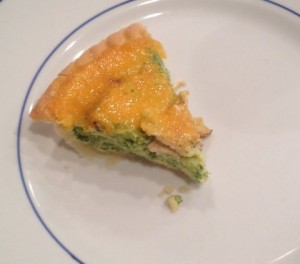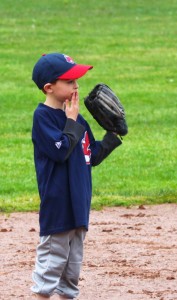Recently a friend of mine was advised to have his nine-month old daughter evaluated, with the possibility that she might be on the autistic spectrum. Having gone through it myself, I know the panic and despair that can follow, and the amount of conflicting and confusing information that can be obtained from the internet when it is searched at random. I am not a doctor but, as a parent of a child fully “recovered” from autism, and as a friend, this is the advice I would give to a parent whose child receives a diagnosis of autism….
Dear Friend,
That was horrible news to hear about your daughter, and I surely hope it is unfounded, just a blip in development, and evaluations determine that she will soon be back on track. I understand she went to a speech evaluation last week, wouldn’t make a sound, and then started blabbering baby talk on her own the other day, which is great and, if you don’t mind me saying, kind of funny. I remember when we were at the same point with Alex, when you feel something is not quite right but you are not sure what it is, and I can appreciate the panic and despair you must be feeling – if you are at all like me you are losing a lot a sleep searching for resources on the internet and getting all kinds of conflicting information about what to do and how to proceed.
As you know, Alex is fully recovered and, hopefully, my experience can help you avoid some of the wrong turns we made, and avoid the dead ends and pitfalls that can easily occur. I wish I could lay out an exact blueprint for you to follow but, unfortunately, each child is different and reacts differently to different therapies and interventions – there is a lot of trial and error involved. “Hope for the best and prepare for the worst”, as they say, and in this case I think there is a lot you can do just in case things do not turn out as well as we hope.
Your first step (now!) should be to find a good developmental pediatrician who (unlike your “regular” pediatrician) will be specifically trained in identifying a wide range of developmental disorders and will be able to assist in diagnosing your child, providing written recommendations for services, and in helping design an individualized treatment plan for your child. They know how the “system” works and they can help you get services from the state and recommend appropriate therapists for your child (many of these doctors have therapists “on staff”).
We made some mistakes in this area, and we had one doctor in Massachusetts who helped with biomedical intervention (discussed below), one or two developmental pediatricians in New York that helped with evaluations and recommendations, and another one in New York that we once hired at an outrageous price to provide an evaluation for Alex in a rush. Ideally, you will find one doctor who can fulfill all of these roles, and I know of two in New York I can highly recommend, and a couple of others I have heard great things about. Sadly, the services of these doctors are in much greater demand than their supply, and you will find that the first appointment you can get is six months or more away. Call now, then turn on the charm and keep calling, looking for a cancellation – the earlier you get your foot in the door the better.
Your developmental pediatrician will be able to give you a better and more detailed diagnosis than the evaluations provided by the State evaluators. In our case, the diagnosing psychologist from the State observed Alex for maybe 20 minutes before diagnosing him on the autistic spectrum. His diagnosis was accurate, and I remain grateful for his honesty and some advice he gave us about “alternative” treatments, but it wasn’t until we went to an all-day evaluation with a developmental pediatrician and her team of therapists that we were able to pinpoint the type of therapy that Alex needed and to which he would respond.
There are many types of therapy for kids on the spectrum, and it can be confusing at first. One fact that is nearly undisputed is that the earlier and more intensely you get therapy for your child, the better off they will be in the long run. I think the best way to simplify things in this area is to divide it between behavioral therapy and all other types of therapy:
Behavioral Therapy
Most parents do not appreciate the fact that their typically developing kids, in large part, teach themselves by observing and mimicking other kids and adults. Put them in a classroom with kids and a bunch of toys, or on the playground, and they quickly learn how to interact with the others. For kids on the spectrum, its different — they do not enjoy interaction with others, they don’t appreciate the rewards, and they are often described as “being in their own little world.” To interact “normally” they need to be taught, skill by skill, how to interact with others. The variety of therapies available, each of which has strong proponents, can quickly become overwhelming — Floortime, DIR, ABA, TEACCH, RDI — you will no doubt be confused at first, then probably amazed at the speed at which you pick up the therapeutic vernacular. As a parent, you must realize that each child is different, reacts differently to different types of therapy, and it is your job to observe and understand the goals, limitations, and effectiveness of each type of therapy as it pertains to your child. You will need to figure out which type of behavioral therapy works for your child, and then continue to monitor and adjust things as your child progresses.
Other Therapy
The “basics” are speech and language (SLT), and occupational therapy (OT), and maybe physical therapy (PT). In my opinion it is important not only to find therapists who are skilled at working with your child, but also skilled at communicating and working with other members of your therapy team. It is great if your speech therapist can teach your child those hard consonant sounds he may be having trouble with, it is even more valuable it they can do so while reinforcing the play skills currently being worked on by your floortime therapist. You can facilitate communication through team meetings, but it is tough to get everybody together on more than a semi-annual basis. Its easier, and more timely, if your therapists email each other and, at the very least, take five minutes before or after each session to talk to you about what is going on with other therapies, and at school, and with your developmental pediatrician.
One more word about therapy – you want as much as you can get, and you are going to need to fight for it unless you want to pay privately. We started out, after quite a bit of work, receiving 40 hours per week of one-on-one therapy for Alex, which consisted of about half ABA behavioral therapy, in addition to speech, occupational, physical, and other types of behavioral therapy. Over the first year we slowly moved away from ABA and toward a more floortime based approach, as that seemed to be what Alex responded to best. Once school age is reached (three years), you move to a different agency and it becomes harder to get that amount of therapy. There are not enough therapists or funding to go around and you will be pushed hard to go to receive all your therapy at the school you go to, typically one or two hours each of speech, occupational and behavioral therapies. We spent three full hours at our first IEP meeting arguing for five hours of speech instead of two, and then the meeting was ended. We hired a lawyer when we went back, he sat in the corner and did not say a word, but I think his presence indicated to them that we were serious and knew our rights, and we ended up getting twenty hours of therapy, in addition to school, without much of an argument. I know it sounds awful to have to hire a lawyer, but its my belief that they pay for themselves many times over if you avoid the need for privately paid therapy. Additionally, its important to get services the first year, because it is much easier to keep services than to add to your plan the following year. Each year your CPSE administrator will tell you how well your child is progressing in each area and that services can be reduced. At that point you should put a shocked look on your face and explain that yes, she is progressing, but its because of the therapy, and we cannot stop now or she might regress, just one more year please…..
Finally, you must realize the importance of dietary and biomedical intervention and that autism is a whole body disorder, not just a disease of the mind. There is plenty of controversy here, but suffice it to say I am as certain of the benefits of biomedical intervention as I am that the earth is round, and I know that Alex would not be recovered today without it. I am quite confident that ten years from now special diets and biomedical intervention will be part of the standard approach for treating kids on the spectrum.
In my experience in talking with hundreds of parents and attending lectures and conferences, autistic spectrum disorders are nearly always accompanied by digestive and nutritional deficiencies, metal imbalances, and impairment of biochemical processes that need to be identified and addressed in order for the body and mind to function properly and to get the most out of therapy. As our doctor in Massachusetts put it, “heal the body so the mind can respond to the therapy”. Alex was on a daily regimen of supplements that often exceeded a dozen capsules (as well as creams, liquids, and an occasional injection), and it took tremendous parental and culinary ingenuity to figure out how to get all those capsules inside of a 3 or 4 year old who was also a picky eater. But therapists were continually amazed at Alex’s remarkable progress and there were times, like when we began B12 shots twice a week, when they commented on how much better his behavior and focus was on days when he had the shots, without even knowing we had started something new. You definitely need a good doctor (hopefully your developmental pediatrician) who can administer and interpret tests every six months or so, but I can promise you will not be sorry for the effort. As a friend, I cannot stress strongly enough that this type of “whole body” approach, treating the physical concurrently with the mental and emotional, is the surest way to profound improvement or even recovery.
 It is easier than ever to find gluten free substitutes for many products at most grocery stores. Unfortunately for parents of children on a gluten free diet, gluten free is not automatically healthy – refined sugar, empty calories and processed ingredients still equal junk food whether or not the ingredient list also contains gluten. Getting children to “eat healthy” is a difficult task, especially when it comes to vegetables.
It is easier than ever to find gluten free substitutes for many products at most grocery stores. Unfortunately for parents of children on a gluten free diet, gluten free is not automatically healthy – refined sugar, empty calories and processed ingredients still equal junk food whether or not the ingredient list also contains gluten. Getting children to “eat healthy” is a difficult task, especially when it comes to vegetables.






 [
[
